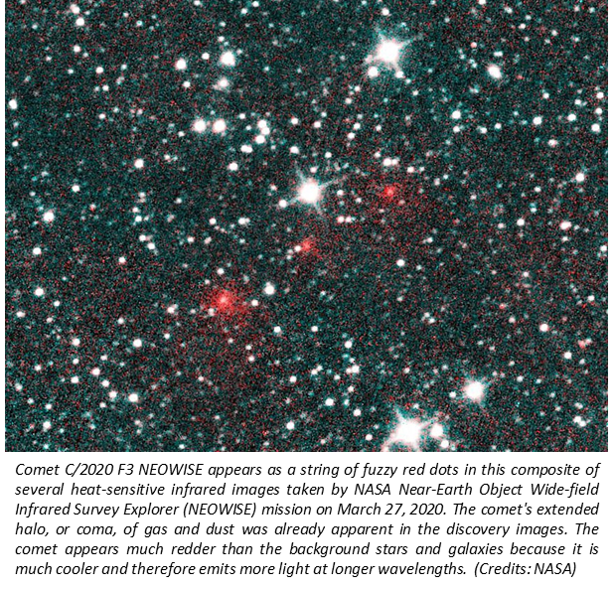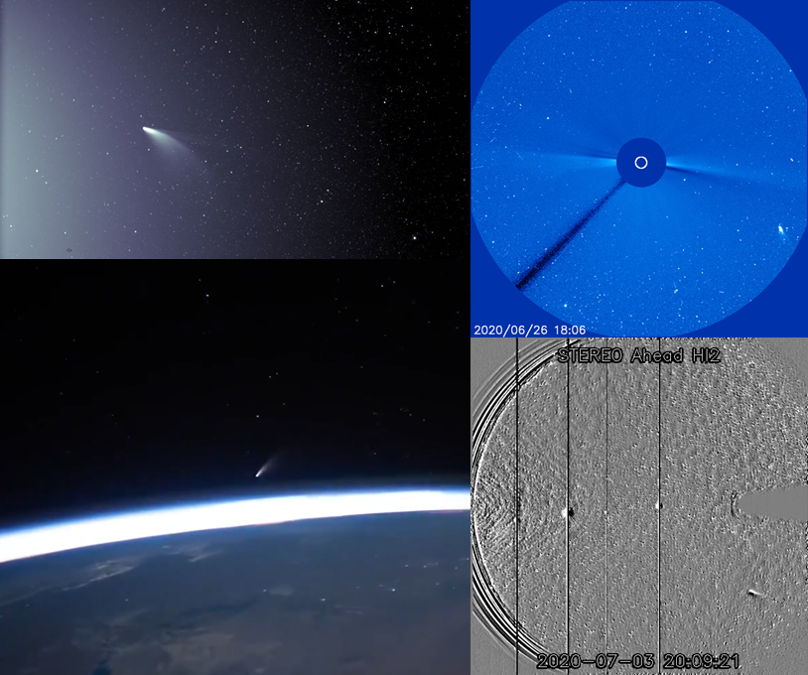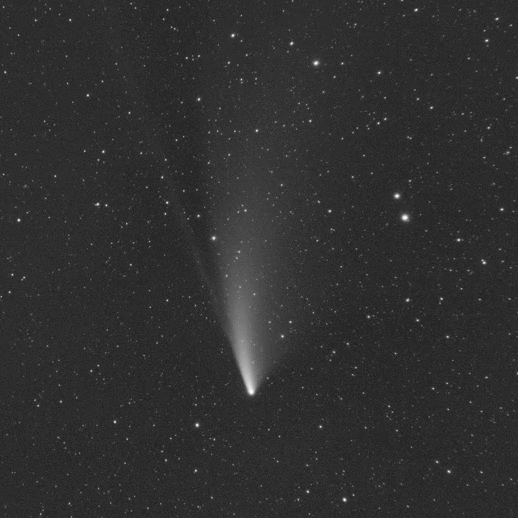Comet NEOWISE was discovered by NASA's Wide-field Infrared Survey Explorer (WISE) on 27 March 2020, as part of the NEOWISE program (NEO: Near-Earth Object). At that time, the comet was at a distance of more than twice the sun-earth distance from the Sun, and obviously very dim.

All that changed as its orbit brought this 5-km wide solitary traveller, consisting of ice and rock, ever closer to our star. Eventually, on 3 July, it passed the Sun at only 43 million km, that's within Mercury's orbit and very similar to the intended closest distance of Solar Orbiter. The collage underneath shows pictures of comet NEOWISE taken by a fleet of satellites: Parker Solar Probe (upper left), the International Space Station (ISS ; lower left), SOHO (upper right), and STEREO-A (lower right). The comet became visible with the naked eye, putting on a great display for observers in the northern hemisphere as it became slightly brighter than the North Star (Polaris). Meanwhile, the comet has receded from the Sun and -since 23 July- also from the Earth, and one needs already a small binocular to have a decent view of the comet.

Emil Kraaikamp of the Royal Observatory of Belgium imaged the comet on 20 July from the Netherlands using a monochrome camera and a 35 mm lens. The animation below shows the movement of the comet in about 1 hour time. Despite this short timeframe, the comet can be seen moving against the background stars. Careful examination reveals the comet has two tails: a dust tail, which is the wide fan-shaped tail pointing mostly upwards in this image, and an ion tail which is the relatively narrow and straight streak pointing to the upper left. An ion tail forms when ultraviolet sunlight rips one or more electrons from gas atoms in the particle cloud around the comet's nucleus, turning them into ions (charged particles). The solar wind then carries these ions straight outward and away from the Sun along the magnetic field lines that are draped around the comet. This is why an ion tail is always pointing away from the Sun. Occasionally, when there is a sufficiently strong disturbance in the solar wind such a from a coronal mass ejection, this tail can get detached from the comet. This is called a disconnection event, an example of which has been described in the STCE Newsitem of 28 January 2015.






